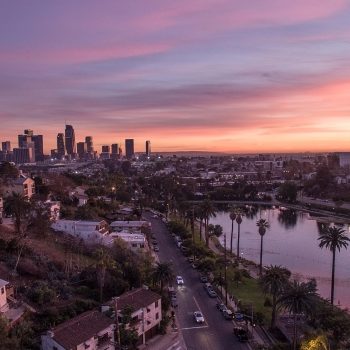Formerly bustling office buildings and business districts have felt like ghost towns since the COVID-19 pandemic forced many of us to work remotely. A third of U.S. workers are still working from home, changing the rhythm of life in cities. Rush-hour traffic is lighter, restaurants and shops that cater to office workers remain shuttered, and well-off city-dwellers who no longer need to live near the office are snapping up homes in the suburbs.
The shift to remote work may continue long after the pandemic ends. Tech companies like Twitter and Facebook have announced permanent teleworking options, while Nationwide Insurance, REI and others are closing office buildings in anticipation of new work patterns. More than 80% of office workers would like to work from home at least once a week after the pandemic, and nearly 90% of executives expect many or most of their employees will do so, according to a June survey by consulting firm PwC.
What will Los Angeles and other cities look like when so many more people work from home? Will offices become a thing of the past? Will urban centers be hollowed out? Predictions about the death of the office are premature, but a mass move toward remote work could transform American cities and affect housing prices, traffic and commute times, and where people choose to live.
At USC’s Marshall School of Business, I research how housing and labor markets interact in urban economies, so I was curious what might happen if stay-at-home telecommuting patterns continue long after the pandemic. A recent University of Chicago study found that 37% of jobs in the U.S. can be done entirely from home. With two colleagues, I developed a model to help understand what Los Angeles might look like if a third of employees worked from home…
Read the full article at The Los Angeles Times.
This article was produced by Footnote in partnership with USC Marshall School of Business.





